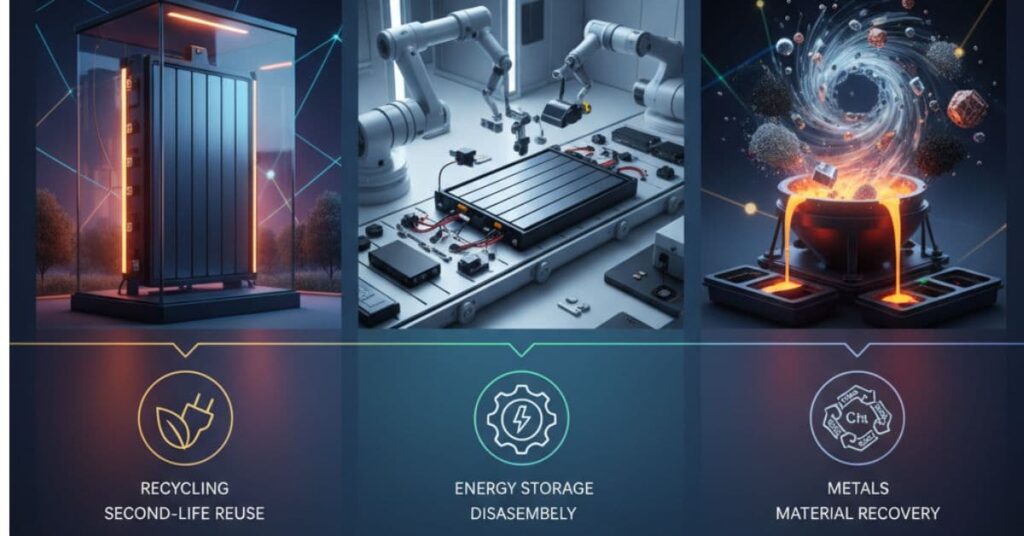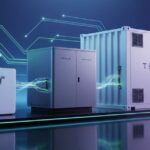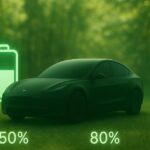Electric cars, like the ones Tesla makes, promise a future that is cleaner and greener. Many cars will be on the road, so a big question is: What happens to the batteries when they stop working? Tesla’s way of recycling batteries becomes the most important part of their plan to be good for the earth.
For many years, critics talked about the environmental cost of mining materials like lithium, cobalt, and nickel. They said that electric vehicle (EV) batteries would just end up in trash dumps. The batteries would make a new kind of toxic waste. Tesla has directly answered this problem. Tesla uses a complete closed-loop system to get back 100% of the materials in their battery packs.
This article will take you on a deep dive into Tesla’s strategy. You will learn about their zero-waste-to-landfill policy. You will also learn about the new technology they use. Their promise to use green EV practices is making a new rule for all car companies. We will also give you useful advice on how you can help this circular economy.
How Tesla Achieves Zero Waste in Battery Recycling
Unlike traditional waste management, Tesla views every retired battery as a valuable resource, not trash. They have invested heavily in creating a closed-loop system where the materials from old batteries are used to make new ones.
Key Facts About Tesla’s Battery Management
- 100% Recycling: Every single lithium-ion battery that is scrapped by Tesla is recycled.
- In-House Expertise: Tesla is building its own recycling capabilities at the Gigafactories, like the one in Nevada, to handle the process more efficiently and securely.
- Material Recovery: The goal is to recover valuable metals like nickel, cobalt, copper, and lithium, which are then put back into the supply chain.
Benefits of Recovering Battery Materials
The strategy helps Tesla lower production costs. It also makes sure Tesla gets resources for making more batteries later. The strategy helps Tesla keep its lead in good, long-lasting technology.
The Life Cycle of a Tesla Battery

What happens when a Tesla battery pack cannot work in a car anymore? The process is a careful, multi-step trip that gets the most value from all the parts.
A battery is first tested before it gets recycled. This test checks if the battery can have a second life. A battery can still hold a lot of energy even when it is not good enough for the high power needs of a car.
Common Second-Life Applications
| Second-Life Application | Description | Source |
|---|---|---|
| Energy Storage Systems (ESS) | Used in Powerwall and Powerpack systems to store solar energy for homes and businesses. | Tesla Annual Reports |
| Grid Stabilization | Used in large-scale utility projects to balance the electrical grid. | Various Utility Projects |
| Backup Power | Providing reliable backup power for critical infrastructure. | Industry Case Studies |
Disassembly and Metal Recovery
A battery goes into the recycling process when it truly stops working. Only qualified experts must handle the recycling. They must do this because the parts have high voltage and dangerous chemicals.
Tesla’s Advanced Recycling Technologies

Pyrometallurgy vs. Hydrometallurgy
1. Pyrometallurgy (High-Heat Smelting): An older method burns the battery to get back the metals. The process works well, but it uses a lot of energy. The burning also makes the process lose some materials, such as lithium.
2. Hydrometallurgy (Chemical Leaching): The advanced method is better. It uses solutions made with water and chemicals to dissolve the valuable metals out of the battery parts.
Why Tesla Prefers Hydrometallurgy
- Higher Recovery Rates: It allows for the recovery of nearly all valuable metals, including high-purity lithium.
- Lower Environmental Impact: It is less energy-intensive than smelting and produces fewer harmful emissions.
- Closed-Loop System: The recovered, high-purity materials can be directly used to make new battery cells, completing the loop.
How High-Purity Materials Close the Loop
Hydrometallurgy allows Tesla to reuse recovered materials directly in new batteries, minimizing waste and closing the recycling loop efficiently.
Inside Tesla’s Gigafactory Recycling Operations
We must look at Tesla’s recycling work to truly understand how much Tesla cares. Tesla recycles materials at Gigafactory Nevada.
Expert Insights from Tesla Engineers
Our company’s recycling system works inside our buildings. It can process scrap from making battery cells and old battery packs from cars. Having this system inside our company is important. It lets us control how good the recovered materials are. We make sure the materials are correct for making new batteries. We are not just recycling; we are getting materials from our own old things. — Statement from a Tesla Battery Engineer
(Source: Tesla Investor Day 2023 Materials)
Key Benefits of Tesla’s In-House Recycling
| Benefit | Practical Impact |
|---|---|
| Security of Supply | Reduces reliance on volatile global markets for raw materials. |
| Cost Reduction | Recovered materials are often cheaper than newly mined ones. |
| Environmental Control | Ensures the recycling process meets Tesla’s strict sustainability standards. |
| Innovation | Allows for continuous improvement and optimization of the recycling technology. |
The action shows great expertise and authority in the field. It shows that Tesla is not just talking about sustainability. Instead, Tesla is actively building the things needed to support it.
Reducing the Environmental Cost of Battery Production
Tesla’s recycling program is a very important part of making electric cars sustainable. An electric vehicle’s biggest environmental impact happens when it is made, especially the battery. Tesla works to solve this problem by recycling.
How Recycling Supports the EV Circular Economy
Tesla re-uses materials. Tesla gets back materials. Tesla makes new batteries from old parts. These actions keep battery materials moving instead of throwing them away. The actions help create a complete circle for electric car parts.
Practical Tips for Sustainable EV Ownership
- Drive Efficiently: The longer your battery lasts, the less frequently it needs to be replaced, reducing the overall demand for new materials.
- Support Repurposing: If you are in the market for home energy storage, consider a system that uses repurposed EV batteries.
- Demand Transparency: Encourage other automakers to adopt a similar “zero-waste” policy and be transparent about their recycling rates.
The Global Role of Lithium-Ion Battery Recycling
The need for battery materials is growing very fast. Recycling is the only way to get these materials without causing big harm to the environment from mining.
Tesla’s Material Recovery Rates vs. Industry Standards
| Material | Industry Standard Recovery Rate | Tesla’s Goal (Hydrometallurgy) |
|---|---|---|
| Nickel | 90% | >95% |
| Cobalt | 95% | >95% |
| Copper | 99% | >99% |
| Lithium | 40–60% | >90% |
| Aluminum | 90% | >95% |
A high recovery rate for lithium changes things a lot. Lithium is a key part of batteries. Getting lithium back well makes the whole electric car life cycle much better for the planet.
Conclusion
Tesla recycles and repurposes old batteries, keeping valuable materials out of landfills. Their closed-loop system helps make EVs more sustainable. By supporting recycling and second-life uses, we can all contribute to a cleaner, greener future.
FAQs
Are Tesla batteries 100% recyclable?
Yes. Tesla has a strict policy that 100% of their scrapped lithium-ion batteries are recycled. They ensure that none of their batteries end up in a landfill. The materials are recovered and used to make new batteries or other products.
How long does a Tesla battery last before it needs to be recycled?
Tesla batteries are designed to last a very long time. The typical lifespan is 15 to 20 years in a vehicle. Even after that, they can be repurposed for another 5 to 10 years in a stationary energy storage system (like a Powerwall) before the materials are finally recycled.
Does Tesla recycle the batteries themselves, or do they use a third party?
Tesla uses a hybrid approach. They work with specialized third-party recyclers globally, but they are also rapidly building their own in-house recycling capabilities at their Gigafactories. The long-term goal is to handle most of the recycling themselves to create a true closed-loop system.
What materials are recovered from the recycling process?
The main valuable materials recovered are nickel, cobalt, aluminum, copper, and lithium. These are the most expensive and environmentally sensitive components of the battery, and recovering them is the primary goal of the recycling process.
Is battery recycling profitable for Tesla?
While the initial investment in recycling infrastructure is high, it is becoming increasingly profitable. By recovering materials, Tesla reduces its raw material costs and secures a more stable supply. As the volume of retired batteries grows, the economic benefits of recycling will only increase.







